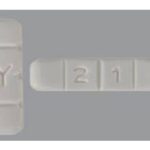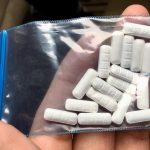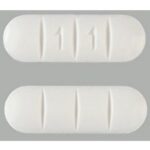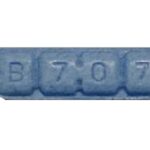What Pill Has S 90 3 On It?
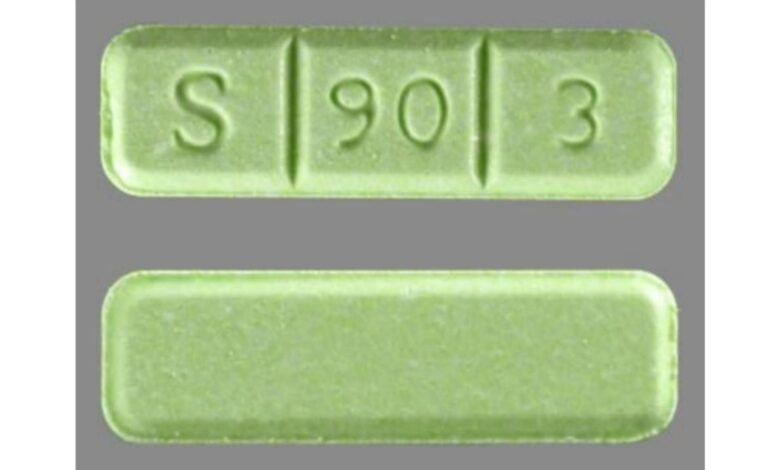
The green rectangle shaped pill has been identified as Alprazolam 2 mg supplied by Dava Pharmaceuticals Inc.. Alprazolam is a benzodiazepine. It is thought that it works by enhancing the activity of certain neurotransmitters in the brain. The S 90 3 pill is used to treat anxiety disorders, panic disorders, and anxiety caused by depression. It is dangerous to purchase alprazolam on the Internet or outside the United States.
S 90 3 green pill commonly known as S 90 3 Xanax is prescription medicine classified as a Schedule 4 controlled substance under the Controlled Substance Act (CSA). Meaning it has a low potential for abuse relative to those in Schedule 3 and has a currently accepted medical use in treatment in the United States. Abuse of the drug or other substance may lead to limited physical dependence or psychological dependence relative to the drugs or other substances in Schedule 3.
How does S 90 3 work?
S 90 3 green pill is part of a class of drugs called benzodiazepines, a group of medicines that produce a state of calm in users. There are around 13 types of benzodiazepines, commonly referred to as “benzos,” that are approved for use as prescription medications by the FDA.
Like other benzodiazepines S 90 3 pill is a central nervous system depressants. The central nervous system is what’s responsible for maintaining the primary functions of our bodies, including the regulation of heart rate, breathing, blood pressure and body temperature. When taken, it slows down these functions somewhat.
S 90 3 Xanax works by creating a calming effect by impacting the effects of gamma-aminobutyric acid (GABA), a naturally-occurring chemical in the brain. GABA is meant to be our natural tranquilizer and is found in 80% of the brain’s nerve connections. If you become anxious or nervous, your brain releases it to calm down the negative activity. If you have anxiety or panic disorders, Xanax works by binding to these receptors and stimulating its signals.
Once ingested, S 90 3 Xanax takes 1-2 hours to reach peak levels in the bloodstream. Taking Xanax regularly may increase tolerance levels, so it may take more time to feel the effects. How quickly the drug is absorbed and eventually leaves the body is also affected by the person’s age, weight, alcohol use, liver function, metabolism, race and whether or not they smoke.
When you take S 90 3 Xanax, the effects tend to take hold quickly, but they don’t last long. Xanax has a relatively short half-life, meaning it doesn’t take long for its effects to reach a peak after it is ingested. That’s one of the reasons Xanax has such a high abuse potential; drugs with a short half-life tend to be more commonly misused.
How should S 90 3 Pill be used?
Follow the directions on your prescription label carefully, and ask your doctor or pharmacist to explain any part you do not understand. Take S 90 3 Pill exactly as directed. Your doctor will probably start you on a low dose of alprazolam and gradually increase your dose, not more than once every 3 or 4 days.
Alprazolam is also sometimes used to treat depression, fear of open spaces (agoraphobia), and premenstrual syndrome. Talk to your doctor about the possible risks of using this medication for your condition. This medication may be prescribed for other uses; ask your doctor or pharmacist for more information.
What side effects can S 90 3 Pill cause?
S 90 3 Pill may cause side effects. Tell your doctor if any of these symptoms are severe or do not go away:
- drowsiness
- light-headedness
- headache
- tiredness
- dizziness
- irritability
- talkativeness
- difficulty concentrating
- dry mouth
- increased salivation
- changes in sex drive or ability
- nausea
- constipation
- changes in appetite
- weight changes
- difficulty urinating
- joint pain
Some side effects can be serious. If you experience any of the following symptoms call your doctor immediately or get emergency medical treatment:
- shortness of breath
- seizures
- severe skin rash
- yellowing of the skin or eyes
- confusion
- problems with speech
- problems with coordination or balance
Alprazolam may cause other side effects. Call your doctor if you have any unusual problems while taking this medication.
S 90 3 Pill Safety Information
S 90 3 Pill contain alprazolam may can increase the risk of serious or life-threatening breathing problems, sedation, or coma if used along with certain medications. Tell your doctor if you are taking or plan to take certain opiate medications for cough such as codeine (in Triacin-C, in Tuzistra XR) or hydrocodone (in Anexsia, in Norco, in Zyfrel) or for pain such as codeine (in Fiorinal), fentanyl (Actiq, Duragesic, Subsys, others), hydromorphone (Dilaudid, Exalgo), meperidine (Demerol), methadone (Dolophine, Methadose), morphine (Astramorph, Duramorph PF, Kadian), oxycodone (in Oxycet, in Percocet, in Roxicet, others), and tramadol (Conzip, Ultram, in Ultracet). Your doctor may need to change the dosages of your medications and will monitor you carefully. If you take S 90 3 with any of these medications and you develop any of the following symptoms, call your doctor immediately or seek emergency medical care immediately: unusual dizziness, lightheadedness, extreme sleepiness, slowed or difficult breathing, or unresponsiveness. Be sure that your caregiver or family members know which symptoms may be serious so they can call the doctor or emergency medical care if you are unable to seek treatment on your own.
Alprazolam may be habit forming. Do not take a larger dose, take it more often, or for a longer time than your doctor tells you to. Tell your doctor if you have ever drunk large amounts of alcohol, if you use or have ever used street drugs, or have overused prescription medications. Do not drink alcohol or use street drugs during your treatment. Drinking alcohol or using street drugs during your treatment with S 90 3 also increases the risk that you will experience these serious, life-threatening side effects. Also tell your doctor if you have or have ever had depression or another mental illness.
S 90 3 may cause a physical dependence (a condition in which unpleasant physical symptoms occur if a medication is suddenly stopped or taken in smaller doses), especially if you take it for several days to several weeks. Do not stop taking this medication or take fewer doses without talking to your doctor. Stopping S 90 3 suddenly can worsen your condition and cause withdrawal symptoms that may last for several weeks to more than 12 months. Your doctor probably will decrease your S 90 3 dose gradually. Call your doctor or get emergency medical treatment if you experience any of the following symptoms: unusual movements; ringing in your ears; anxiety; memory problems; difficulty concentrating; sleep problems; seizures; shaking; muscle twitching; changes in mental health; depression; burning or prickling feeling in hands, arms, legs or feet; seeing or hearing things that others do not see or hear; thoughts of harming or killing yourself or others; overexcitement; or losing touch with reality.

